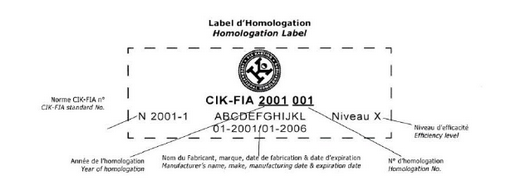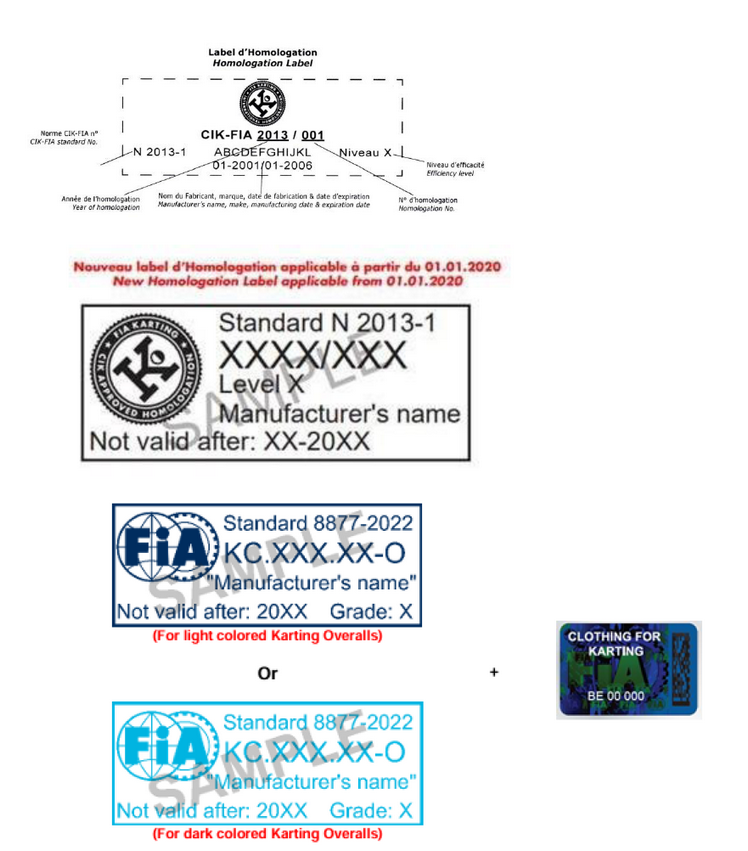G3 CLOTHING & STANDARDS
| G3.1 | IDENTIFICATION: All competitors, irrespective of age, are to have some means of ready identification (first and last name, eg. Bruce Bayliss) stitched or screened on the exterior of their racing overalls and wet racing clothing. Options: |
• on the outside left or right breast of the overalls.
• on the outside of the overalls belt.
| G3.2 | CLOTHING: Race suits must be worn. Race suits must cover the whole body from neck to ankles, including arms, and be adequately secured at the neck, wrists and ankles. Race suits other than leather must be lined with cotton, polycotton or brushed cotton which must be attached to all garment seams. Boiler type race suits with pop type buttons are unacceptable. Race suits must have adequate and operable fastenings and be in sound condition free of tears, damage and excessive wear. The Chief Steward’s decision regarding the acceptability or otherwise of race suits and other clothing will be final. |
| The following options are permitted: |
| Option 1 | One piece fabric race suits homologated by the FIA to the latest FIA Standard 8877-2022, Grade 1 FIA Standard 8877-2022 Karting Overalls List or homologated by the CIK-FIA to CIK Standard N2001-1 CIK-FIA Homologated Race Suits N2001-1 List or N2013-1 CIK-FIA Homologated Race Suits N2013-1 List with an efficiency level of either Level 1 or Level 2. The FIA or CIK-FIA homologation label (see samples below) are on the back of the collar embroidered on to the outer fabric layer only. For KartSport New Zealand sanctioned events, race suits homologated by the CIK-FIA or the FIA have no expiry date. |

NOTE: CIK-FIA Homologations for Standard N2001-1 all expired on 31-12-2016 therefore any suit showing N2001-1 with a manufacturing date later than 31-12-2016 is incorrectly labelled and illegal to use.

Option 2 One or two piece leather race suits complying with the standards defined by the FIM. (1.2mm thickness) If two piece the two pieces must be securely and fully fastened together by an appropriate zip. Leather race suits are compulsory for all SuperKart International and National classes and strongly recommended for all other SuperKart classes.
NOTE: for FIA International Competition:
Only Overalls approved according to FIA Standard 8877-2022 which are listed in the FIA Standard 8877-2022 Karting Overalls List can be used.
Wet Weather Over-suit: A wet weather over-suit or other water resistant clothing or any other clothing may be worn over the race suit. Such wet weather over-suit/clothing must be adequately secured at the neck, ankles and wrists and must not have any protrusions. Provided the wet weather over-suit is transparent and the name on the race suit (re Rule G3.1) can be seen clearly underneath, no additional marking is required as per Rule G3.1. Otherwise a suitable permanent marking of the name as per Rule G3.1 on the wet weather over-suit/clothing, that won’t degrade during the event, is required.
|
It is important that if you observe unprotected wrists and/or ankles the competitor needs to be informed that this does not comply with the regulations. Cover up. The two most vulnerable parts on the body in an incident are the ankles and wrists. |
| G3.3 | GLOVES: These must be of substantial material, eg. leather or vinyl etc, give complete hand and finger protection, be firm fitting and worn during practice and competition. |
NOTE: Vinyl must be lined and must not be in direct contact with the skin.
Check the fitting of the gloves. A number of youngsters use BMX gloves which are very short and do not reach the wrist.
| G3.4 | FOOTWEAR: Suitable footwear of enclosed type giving full foot protection. Laced type with ankle protection preferred. |
Race boots are preferred, but the common footwear called runners (sports shoes) are OK providing the competitor wears socks that go under the race suit.